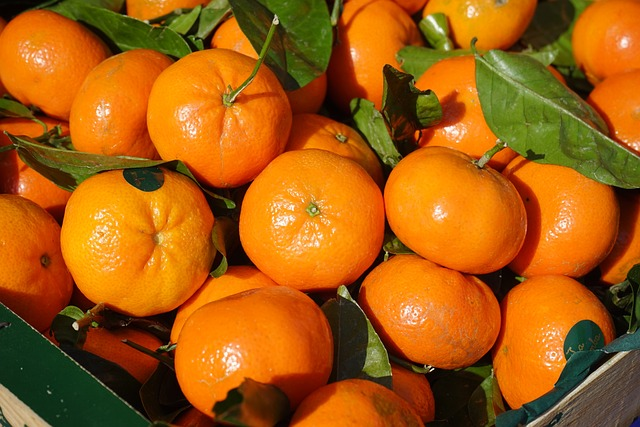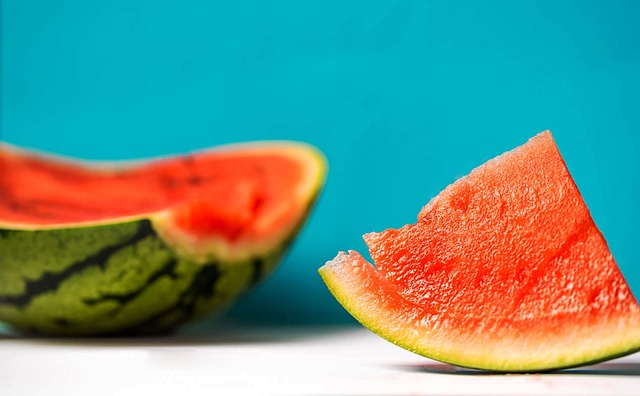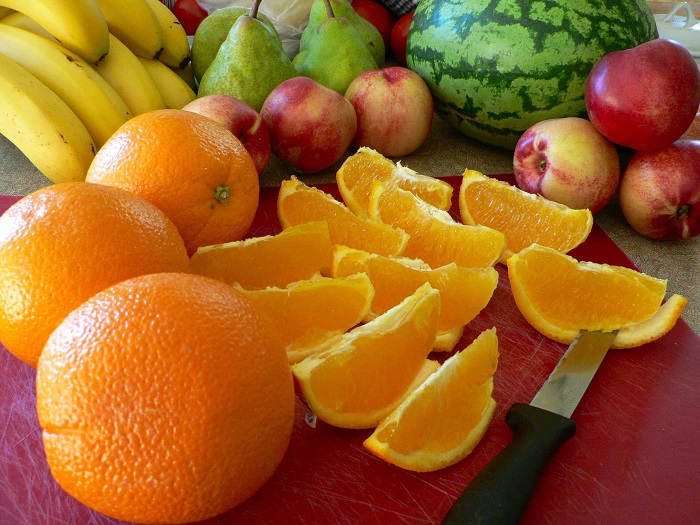Hybrid Fruits and Vegetables Agricultural Wonders

Hybrid fruits and vegetables, along with their parent plants, have a long history, predating genetically modified organisms (GMOs). These hybrids, like the apricot hybrid or red raspberry, have been integral to nature’s evolutionary journey, contributing to diverse species and flavors. Understanding the nuances between natural and man-made hybridization processes offers insight into their vital role in the ongoing evolution of plant life.
Here’s a little background on the natural and man-made hybridization processes that will hopefully put things into perspective.
Hybrid Fruits and Vegetables: Some Background
The terms hybrid fruits or hybrid vegetables are more than enough to scare away consumers who quickly associate them with genetically engineered organisms. Even though they might seem similar at first, they couldn’t be more different.
Are Hybrid Fruits and Vegetables GMOs?

Hybrid fruits, like the apricot hybrid or red raspberry, are distinctly different from genetically modified organisms (GMOs). They stem from natural cross-breeding processes inherent to plant reproduction, blending traits from parent plants within the same species, genus, or family. This natural method, occurring without direct human intervention, enhances desirable characteristics such as taste, texture, and disease resistance.
GMOs, on the other hand, involve deliberate alterations to an organism’s DNA using genetic engineering techniques. Scientists modify the genetic material of these organisms, such as the yellow ellendale mandarin or brussels sprouts, by inserting genes from other species to confer traits like higher yields, disease resistance, or improved flavor. This process differs significantly from the natural hybridization observed in hybrid fruits.
It’s essential to note that hybrid fruits, such as the blood lime or key lime, result from controlled cross-breeding, while GMOs represent intentional genetic modifications conducted in a laboratory setting. While hybridization occurs spontaneously in nature or through controlled farming, GMOs are the product of targeted genetic manipulation.
In essence, hybrid fruits are the outcome of centuries-old natural processes that blend the best traits of parent plants, while GMOs involve intentional genetic modifications to achieve specific desired characteristics in crops or fruits like the apricot or plum. Understanding this distinction helps differentiate between naturally occurring hybrids and genetically modified organisms in agriculture.
So What Are They, Then?
Hybrid fruits, akin to naturally occurring genetically modified organisms (GMOs) in some respects, represent a merging of entire genetic compositions rather than the selective transfer of a few genes between organisms.
In today’s market, a myriad of fruits align with the concept of modern hybrids, while specific varieties may stand out as exemplars of this contemporary understanding of controlled plant hybridization. However, when delving into the broader context of history and the evolution of plants, it becomes apparent that all plants exhibit elements of hybridization.
The essence lies in the amalgamation of genetic material, whether in the context of controlled hybridization present in fruits like the blood lime or ellendale mandarin, or in the broader scope of plant evolution across nature. Understanding this broad perspective sheds light on the pervasive role of hybridization in shaping the genetic diversity and characteristics of plants.

Painting by Giovanni Stanchi, the 1600s, showing how watermelons and other fruits looked like hundreds of years ago.
Fruits that ARE hybrids in the modern sense include:
Blood limes: red finger limes + Ellendale mandarins.
Apriums: 25% plums + 75% apricots.
Pluots: 75% plums + 25% apricots.
Nectaplums: nectarines + plums.
Seedless watermelons, grapes, apples, pineapples, citruses, etc.
Contrary to the popular belief, peach, nectarines and pomelos are not hybrids in the modern sense. Nectarines are peaches that have undergone natural mutations and stopped producing the fuzz. Pomelos are natural citruses that grow in South and Southeast Asia.
However, scientists have also proved that a series of other common fruits currently on the market have been hybridized by humans or nature in the past. Apples (including Honeycrisp), lemons, limes & key limes, grapefruits, sour oranges, blood oranges, clementines, mandarins, bananas, avocados, strawberries, cherries, raspberries, blackberries, tomatoes, plums, pears, and grapes are hybrid fruits in the modern sense of the term.
Science Behind Hybrid Fruits and Vegetables

Hybridization, at its essence, involves intentionally cross-breeding different plant varieties within the same species, enhancing nature’s diversity and creating remarkable offspring with desirable traits. This blending of qualities from parent plants results in fascinating hybrids that exhibit unique flavors, textures, and resilience.
Imagine merging the sweet succulence of a specific strawberry variety with the disease resistance of another – that’s the marvel of hybridization! It’s a meticulous selection process where breeders choose parent plants based on traits like high yields, distinct flavors, or prolonged shelf life. By cross-pollinating these parent plants, hybrids are born, showcasing the best characteristics from each lineage.

You might wonder about the distinction between hybrid fruits and genetically modified organisms (GMOs). Hybrids, unlike GMOs, naturally occur through cross-breeding in nature, embracing diversity, and harnessing the innate qualities of plants. GMOs, on the other hand, involve genetic engineering in controlled settings, manipulating genes at the molecular level.
One captivating example of hybrids is the ‘Pluot,’ a delightful cross between plums and apricots. It embodies the sweetness of plums and the tart tanginess of apricots, showcasing the power of hybridization in creating distinct and pleasurable flavors.
As you cultivate hybrids in your garden, appreciate their inherent hybrid vigor, which often translates to robustness, disease resistance, and increased yields compared to their parent plants. Embrace this diversity, experiment with various hybrids, and witness the wonders they bring to your garden!
Are seedless fruits seedless because they are hybrids?

No, fruits like the apricot, grapefruit, pineapple and watermelon without seeds aren’t necessarily seedless due to being hybrids or genetically modified organisms (GMOs). Seedless fruits result from plants that either haven’t undergone fertilization by pollination or have been pollinated but don’t develop fully matured seeds.
The absence of seeds in these fruits, such as the apricot hybrid or grapefruit, doesn’t inherently signify that they’re hybrids or GMOs. Instead, it’s a result of specific developmental processes within the plants that hinder seed maturation despite pollination. Understanding this distinction clarifies that seedless fruits aren’t necessarily linked to genetic modification or hybridization, but rather to intricate plant reproductive mechanisms.
Evolutionary Aspects of Hybrid Fruits

Hybrid fruits, at their core, epitomize a natural process deeply entrenched in the evolution of plants. Evolution isn’t solely about survival; it embodies adaptation and innovation. When various plant species intermingle through pollination, they occasionally yield hybrids with unique genetic compositions. This mixing of genetic material opens doors to new traits, showcasing nature’s experimentation and adaptation to changing environments.
Consider the ‘Pluot,’ a striking fusion of plums and apricots. Its existence illustrates nature’s ingenious blending of genetic traits. Over time, through natural selection, hybrids like the Pluot have developed specific characteristics enhancing their ability to thrive in diverse conditions. This adaptability and resilience represent pivotal evolutionary aspects of hybrid fruits.
The allure of these hybrids lies in their genetic diversity, enabling them to thrive in various climates and ecosystems. As a gardener, embracing this diversity can revolutionize your garden. Experimenting with different hybrids tailored to your local climate and soil conditions can yield more robust plants that resist pests, diseases, and environmental fluctuations.
Moreover, hybrid fruits contribute significantly to biodiversity, an integral element in ecosystem preservation. By introducing hybrids into your garden, you’re actively contributing to preserving diverse plant species, fostering a healthy ecological balance. Additionally, these hybrids often possess traits like increased yield or enhanced flavors, making them not just evolutionarily captivating but also highly practical and delightful to cultivate.
Understanding the evolutionary aspects of hybrid fruits illuminates their origin, resilience, and contribution to biodiversity. Embracing these fruits in your garden isn’t merely about planting diverse species; it’s about honoring nature’s creative processes and harnessing the evolutionary advantages these hybrids offer.
Farming Hybrid Fruits and Vegetables

Farming with hybrid seeds began in the ‘20s in the U.S., and a decade later hybrid maize crops were already widespread all over the country.
No matter their type, hybrids tend to borrow the best traits from their “parents.” The first generation of hybrids always shows higher yields, greater uniformity, disease resistance, and better color in plants and their fruits. However, subsequent generations seldom show the same benefits.
Advantages of Hybrid Fruits and Vegetables for Farmers
More yield.
Decreased need for fertilizers and pesticides.
Drought resistant (for some).
Generally, more nutrients (not a rule, though).
Can be classified as organic if they are grown as per USDA’s organic regulations.

Seedless oranges.
Disadvantages of Hybrid Fruits and Vegetables for Farmers
The need to acquire new seeds each year is the most detrimental aspect of farming with modern hybrid plants.
Their premium pricing doesn’t help either. There are just a few companies that have a monopoly on the hybrid seed market worldwide, although these are sold under many, many different brands. Therefore, they afford to increase the prices without worrying the competition might have lower ones. However, these costs are usually made up by harvesting more produce.
The stigma that comes with hybrid fruits is another obstacle for farmers. Many consumers believe they are much more similar to GMOs than to organic produce, which is simply not true. Unfortunately, this leads to lower incomes for farmers.
Overusing hybrid seeds can lead to a decrease in genetic diversity. Since plant geneticists try to create the perfect plant – that is a single organism that can withstand the conditions of different environments – loss of genetic material can be a consequence. This is especially worrying when talking about rare species in isolated habitats, no matter the type of hybridization (spontaneous or human-controlled).
Although generally foreseeable, the process of hybridization can still have unexpected consequences that slow down or increase the costs of production. These can include different blooming periods, pollinating insects not being attracted to the plant anymore, a decrease in pollen production, or even sterility.
How Can Farmers Create Their Hybrid Fruits & Vegetables?
To understand the complexity of this process, we first need to take a look at the different types of hybridization:
Intraspecific hybridization is performed between 2 self-pollinating individuals from the same species.
Interspecific hybridization refers to crosses between 2 individuals of different varieties, self-pollinating or cross-pollinating ones.
Intrageneric hybridization implies crosses between 2 individuals of different species but within the same genera. The results are most often resistant to diseases and extreme environmental conditions.
Intergeneric hybridization is a cross between 2 individuals of different species but within the same family. It aims to produce resistant fruits and vegetables which also show desirable traits.
The Hybridization Process
The first step in plant hybridization is selecting the parents. Both the male and the female part need to have desirable traits and mature at the same time. During the next step, emasculation, the anthers of bisexual plants are removed before pollen is shed to prevent self-fertilization. This step is skipped for monoecious plants. Then, the pollen of the male flowers is collected and dusted over the pistils of the female flowers. The flowers are then stored until the seeds are ready to be harvested and planted into the ground.
Farming hybrid fruits and vegetables are not that different than farming regular ones once you have the seeds or trees. A common practice is planting a section of the field with regular seeds so that all the pests are attracted to those since they are easier to attack. However, this is a common practice in traditional farming as well.
Note: The only purpose of the aforementioned information is to accommodate farmers and consumers with the process. These should not be taken as sole guidelines when trying to create hybrid fruits.
Final Thoughts on Are Hybrid Fruits and Vegetables Agricultural Wonders?
Hybrid fruits and vegetables are fundamentally different from GMOs, but they still are a highly debatable subject. However, one thing is clear: it’s impossible to stay away from hybrid foods both as a farmer and as a consumer. Trying so will result in farming wild apples that have been naturally hybridized over the years anyway, and which nobody will buy since they are small and sour.


